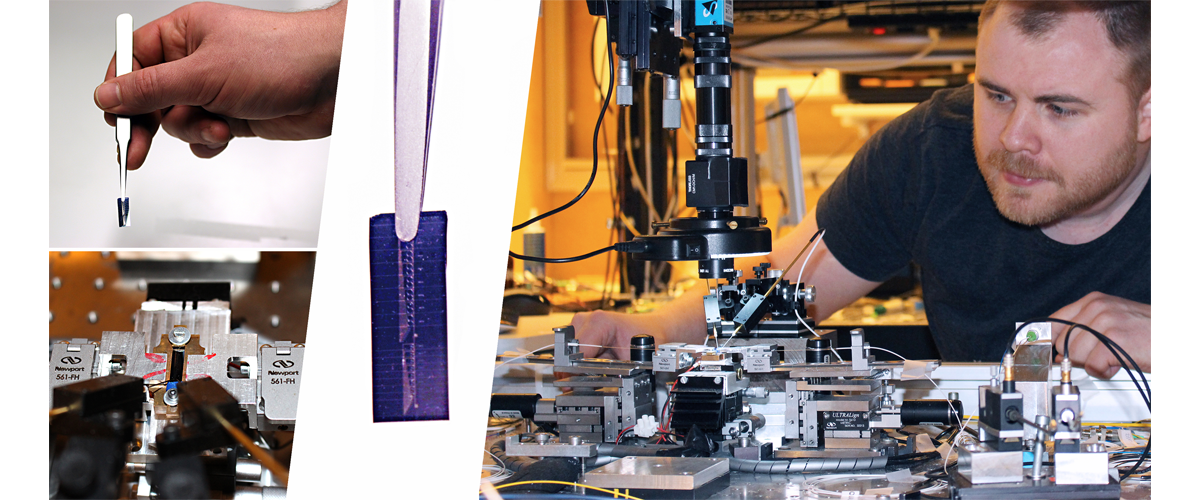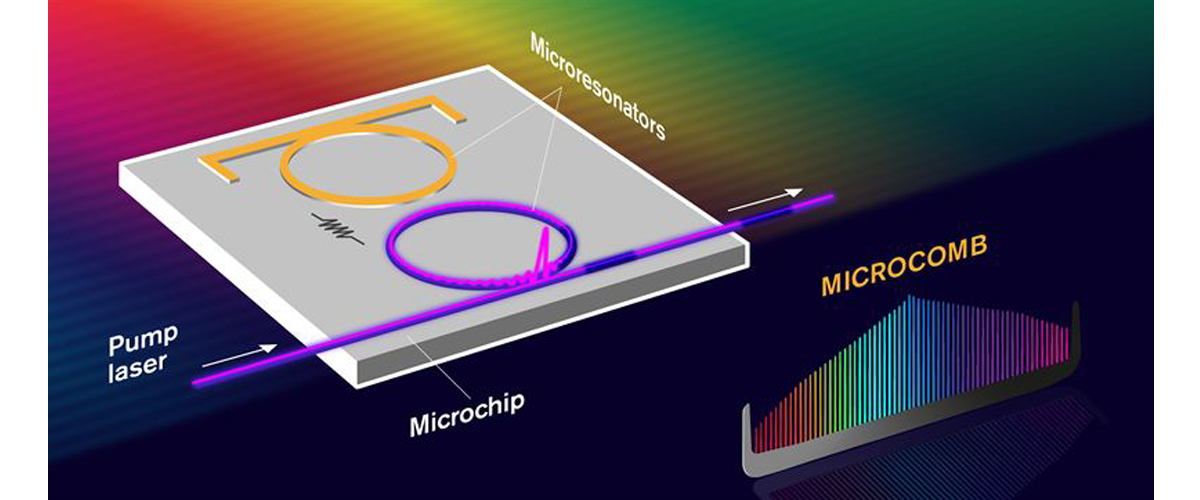New Chalmers University microcomb may help reduce optical system power consumption

Researchers recently described a new microcomb-on-a-chip in journal Nature Photonics. This device can generate a vast number of optical frequencies, which can be used to take a wide range of measurements. A potential application would be to vastly reduce optical communication systems’ power consumption. One single microcomb could replace tens of lasers in data centre interconnects, for example.
A frequency comb is a laser with evenly spaced emission frequencies. Markers set the frequency scale across a portion of the electromagnetic spectrum (UV to mid infrared) and their location can be linked to a known reference. A microcomb generates repetitive pulses of light at extremely high speeds by sending laser light to a tiny optical cavity called a microresonator. Compatibility with photonic integration allows reduced size and power consumption. The large spacing between teeth means that microcombs can be used for novel applications, such as light sources for fibre-optic communication systems. The researchers at Chalmers have combined two interacting microresonators into a ‘photonic molecule’ arrangement with unique physical characteristics.
“The reason why the results are important is that they represent a unique combination of characteristics, in terms of efficiency, low-power operation, and control, that are unprecedented in the field,” says Óskar Bjarki Helgason, a PhD student at the Department of Microtechnology and Nanoscience at Chalmers, and first author of the new article.
Óskar Bjarki Helgason

“One of the more promising applications of microcombs is in the field of optical communications, concretely in wavelength division multiplexing, whereby the frequency lines of the comb could be used to replace the tens of lasers that are used in current systems,” adds says Victor Torres, Associate Professor and research leader of the project, Department of Microtechnology and Nanoscience, Chalmers University of Technology, leader of the research project. “For the technology to find its use outside the lab, we need to co-integrate additional elements with the microresonators, such as lasers, modulators and control electronics. This is a huge challenge that requires maybe five to ten years and an investment in engineering research. But I am convinced that it will happen.”

Chalmers University of Technology founded in 1829 and located in Gothenburg, Sweden, conducts research and education in technology and natural sciences at a high international level. The university has 3,100 employees and 10,000 students, and offers education in engineering, science, shipping and architecture. With scientific excellence as a basis, Chalmers promotes knowledge and technical solutions for a sustainable world. Through global commitment and entrepreneurship, we foster an innovative spirit, in close collaboration with wider society. The EU’s biggest research initiative – the Graphene Flagship – is coordinated by Chalmers. Chalmers is also leading the development of a Swedish quantum computer.




